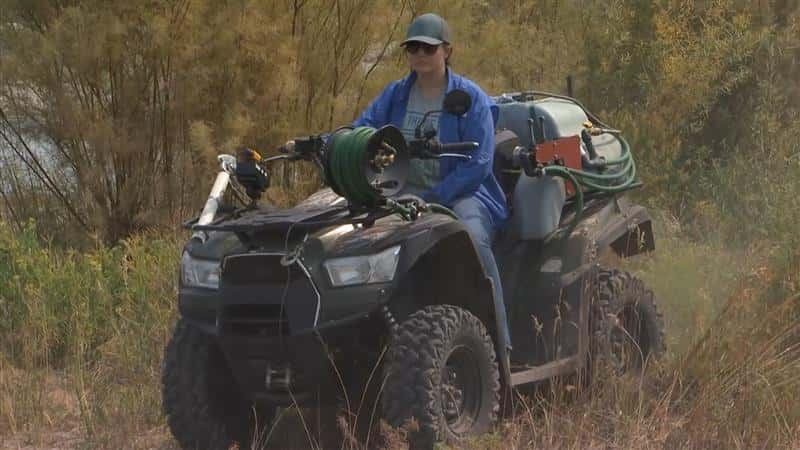Noxious weeds have a destructive impact on Montana's landscape by displacing native plant species, increasing soil erosion, and decreasing wildlife habitat and recreational opportunities.
In South Central Montana, the Yellowstone County Weed District is working on a project along the banks of the Yellowstone River near Shephard where the race is on to stop a noxious species that most people think is a native tree.
“Saltcedar has a pretty flower, it’s an escaped ornamental however with its aggressive seed producing and its long tap root, this thing can dominate a landscape,” says Yellowstone County Weed District Crew Forman/Education Specialist Lyle Scott. “If we can clear it out upstream, get rid of its seed bank, get rid of the trees and work our way downstream then we can have a shot at eradicating this plant from the Yellowstone River.”
It’s is nicknamed the thirsty tree and for good reason.
“One acre of saltcedar can use 7.7-acre feet of water which is equivalent to 2.8 million gallons of water,” says Yellowstone County Weed District Superintendent Joe Lockwood. “It’s going to eventually affect river and stream access for future generations.”
Management is an expensive though. That’s why a grant from the Montana Noxious Weed Trust Fund was so important.
Montana Noxious Weed Trust Fund Board Member Jim Gordon says, “We normally grant in that million and a quarter to a million and a half dollars per year and a lot of that is cost share the cooperative projects that are a 50/50 cost share.”
Treating and monitoring can also be a daunting task, but GPS technology is not only making things easier but more efficient.
“It’s made our work a lot easier being able to catalog it being able to tag it with GPS,” says Mason Industry’s Ward Mason “And also with our picture taking, now with our phones it’s a lot easier to incorporate the GPS tagging so when you take that picture all that information is with it.”
The trick is to get to these noxious weeds like saltcedar as early as possible to stop them before they impact millions of acres more of productive ground in Montana. Montanans have a responsibility to stop the spread of noxious weeds in Montana. To see a list and even pictures of noxious weeds in Montana, visit the Montana Department of Agriculture’s website.
Source: Russell Nemetz-MTN News/Northern Ag Network


